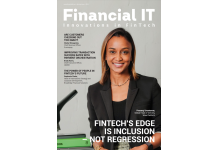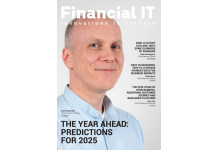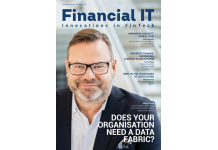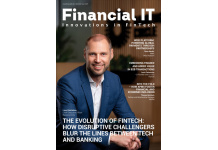Financial IT Fall Edition 2024

- 10 Sep, 2024 04:00 am
The view from (and into) the Middle Kingdom
Who will finance - and settle - all the imports and exports?
Sibos 2024 - the theme of which is ‘connecting the future of finance’ - takes place at the China National Convention Centre (CNCC) in Beijing on 21-24 October, or about a fortnight before the US Presidential Election.
Put another way, the year’s most important conference in international banking is taking place in the city ‘that houses the largest number of Fortune Global 500 companies in the world, as well as the world’s four biggest financial institutions’ AND at around the same time as 2024’s most important geopolitical event.
This is not a normal Sibos. Leaving aside the two occasions that the conference was held in Greater China (in Hong Kong in 2009 and 1991), Sibos has never taken place in what is today the world’s second-largest economy and (just) the second-most populous nation.
As of mid-September 2024, the Sibos website identifies over 125 exhibitors, almost all of which come from one of five constituencies - major Chinese banks, large foreign banks, large technology companies, Chinese providers of financial infrastructure and foreign infrastructure providers. As ever, the website identifies a vast range of topics that will be discussed.
What is perhaps more important is what is NOT mentioned in the website. Remembering my personal experience as a visitor to the Expo 2010 Shanghai China, Sibos 2024 will be an illuminating experience for foreigners. Attendees - and especially those who have spent little time in the country - will get the chance to see the world from both sides of a metaphorical two-way mirror. What are the important messages that the hosts want to deliver? When you look outwards from the Middle Kingdom, what does the globe look like?
The view outwards will provide a key geopolitical insight: China is emphatically not like Russia, Iran or North Korea. It is a critically important trading nation that plays a key role in global supply chains. A paper written by Mary E. Lovely and Jing Yan, two researchers at the Peterson Institute for International Economics (PIIE) in late August provides useful highlights:
- ‘All three of the world’s largest trading regions (the United States, the European Union and China) are pursuing policies to diversify the sources of their imports, both as a hedge agains natural supply disruptions and to reduce vulnerability to economic coercion.’
- ‘Over the last decade, the United States and China have diversified their import sources, while the EU has become increasingly more reliant on China.’
- ‘China and the EU are more reliant on each other for manufactured goods as the United States increases imports from Mexico and the EU.’
- ‘Despite a push for decoupling since 2018, the EU increased reliance on China for technology-intensive goods as the United States diversified its sourcing.’
- Since 2013, China has increased its imports from ‘other’ suppliers in the Asia-Pacific region and elsewhere.
The picture is clear. Trade patterns may be changing, but trade is still huge and thriving. The 2020s are not the 1930s. Trading blocs are still importing and exporting at scale - regardless of geopolitical noise. The imports and exports need to be financed. When they arrive at their destinations, transactions will need to be settled. The identities of the financiers and the providers of cross-border B2B payments infrastructure matter enormously. Sibos 2024 in Beijing’s CNCC will provide crucial insights into who are those organisations and how they operate.
Sibos 2024 at Beijing’s CNCC is an extraordinary event. We wish everyone who is involved a most successful conference.
Andrew Hutchings
Editor-in-Chief, Financial IT





















